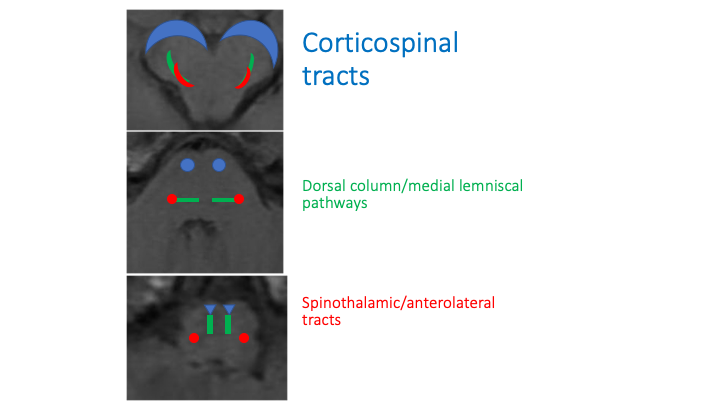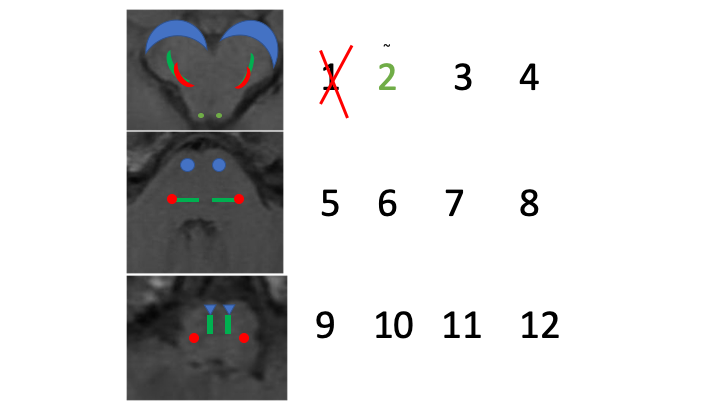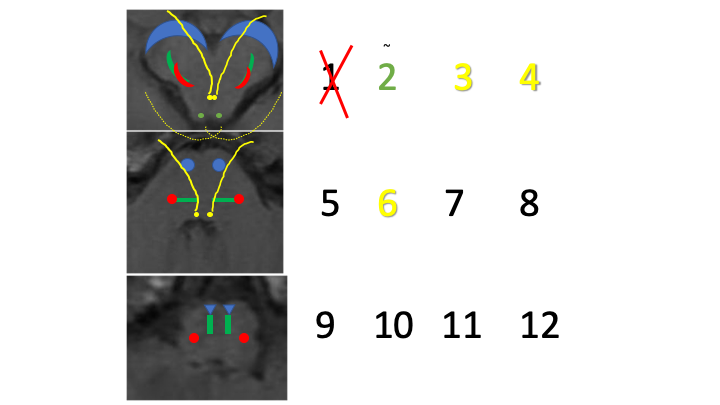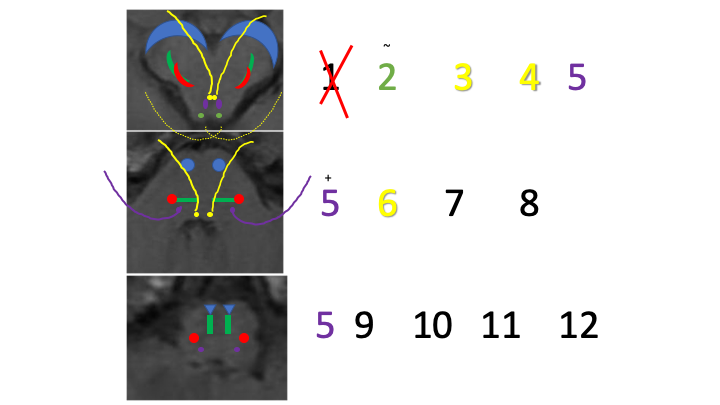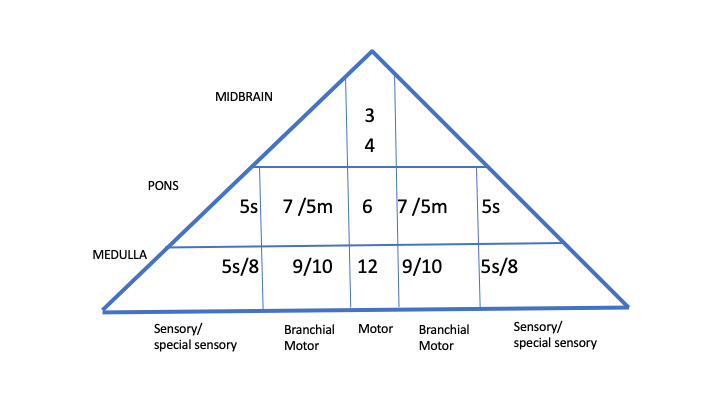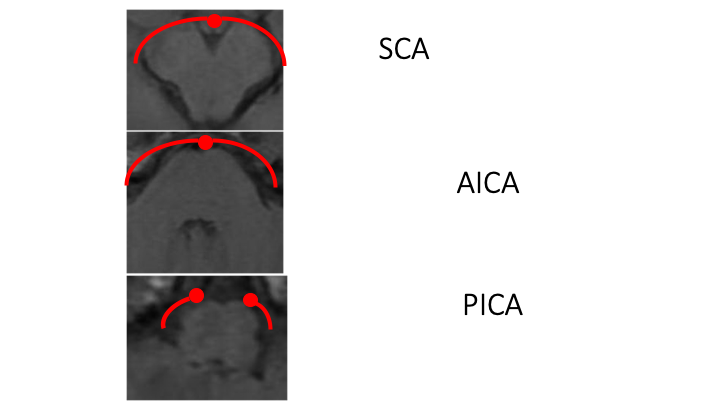This one goes out to all the #MedStudentTwitter studying
for the steps:
The BRAINSTEM and CRANIAL NERVES
#MedEd #NoMoreNeurophobia cc: @MadSattinJ @Tracey1milligan @StaceyLClardy @DxRxEdu @CPSolvers
Pons=two huge cables connecting it to the cerebellum (middle cerebellar peduncles)
Medulla=looks almost like the spinal cord
1 Descending motor pathways for the body
2 Ascending sensory pathways from the body
3 Cerebellar connections
4 Cranial nerve nuclei
5 Reticular activating system etc
These always seemed so confusing to me as a student. But there are two main rules to help categorize these:
First: 12/3 = 4
Second: motor medial, sensory lateral
1 (olfactory) and 11 (spinal accessory) don’t connect to the brainstem.
5 has nuclei at all 3 levels
8: cochlear at pontomedullary junction; vestibular in medulla
But if you just remember 1-4/5-8/9-12 you can figure most localization issues!
Motor CN nuclei=medial, sensory=lateral.
Neuroanatomy textbooks divide nuclei into somatic/branchial/ visceral motor & somatic/visceral/ special sensory
But brainstem=small, and lesions rarely respect 1/6 of it!
So let’s keep it simple: motor v sensory!!
3
4
6
12
Slightly more lateral = BRANCHIAL MOTOR
5m
7
9/10
Most lateral = SENSORY
5
8
Since the pathways for the body are not yet crossed we get ipsilateral weakness above the neck (eyes, face, or tongue) contralateral below the neck
Midbrain–Ipsilateral 3rd nerve palsy and contralateral hemiparesis
Pons–ipsilateral 6 and 7 with contralateral hemiparesis
Medulla–ipsilateral tongue deviation/contralateral hemiparesis
Note, no sensory CNs, no cerebellar!
5lt (pain/temp ipsi face)
8vestib
9/10: dysarthria/dysphagia (branchial motor)
Cerebellum
Spinothalamic: pain/temp contra body
Note NO weakness (in face or body)
Lateral syndromes = circumferential arteries: SCA, AICA, PICA
Now why did that take a WHOLE WEEK in med school....?
#noMoreNeurophobia🧠❤️👍


